| Overview |
Particular descriptions are texts (or parts of texts) which describe the characteristic features of living and non-living things, eg people, places, objects. They provide details about specific and individual people, places and things. They are different from general descriptions which organise and display information about a whole category of things.
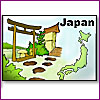 |
Particular descriptions use descriptive language in order
to 'paint a picture' of what is being described. Often the language also gives a
particular feeling or opinion about the object being described.
Sometimes a particular description will be a whole text in itself, for example the description of a holiday resort on a postcard. At other times it may be part of another text, for example a description of a character or a setting at the beginning of a story. |
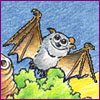 |
There are many reasons for using particular descriptions:
| To create an image: | ||
|
|
We use particular descriptions to create an image using words.
Listeners or readers of a particular description should be able to form a clear picture in
their mind of the person, place or thing being described.
For an example of a particular description used to create an image see My dog Tess |
|
|
|
To provide detailed, factual information: | |

|
When we want to describe a particular person, place or thing quite
factually we first have to observe or do some research. For example, we might observe a
pet, a piece of a
scientific equipment or a specimen in a museum; we might research a geographical
region or the leader of a
country. Then we collect the details together using precise
and accurate language to write a description. At school, students often need to write precise and accurate
descriptions, eg when they record and gather together observations made on a
field trip.
For an example of a particular description used to provide detailed, factual
information see My camera |
|
|
|
To provide a factual summary: | |
 |
Sometimes we describe a particular person, place or thing
for administrative or business reasons. For example, when a person is missing or
wanted, the police provide the media with a clear and accurate description of
the person. Similarly, when a possession is lost or stolen, we describe it very
clearly and accurately in the hope that it will be found.
For an example of a particular description used to provide a factual
summary see Lost dog |
|
|
|
To share experiences: | |
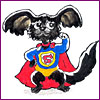 |
Sometimes we describe a particular person, place or thing in order to share our experiences with others and to entertain our listeners or readers. We use descriptive language to create an image, a feeling or a mood. We often use words which reveal our feelings and opinions about the person, place or thing we are describing. Sometimes we play with language to achieve a special effect. Particular descriptions of this kind are often found in stories, plays and poems. They are called literary descriptions. At school, students are often asked to write lively and interesting literary descriptions when they write creatively eg, when they write stories or poems. | |
When students listen to, read, tell or write particular descriptions, they do the following with language:
|
describe people, things and places |
|
| describe actions and abilities | |
| describe time, place and manner | |
|
compare and contrast |
|
|
express feelings and opinions |
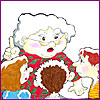 |
Particular descriptions are used in everyday
conversations with family and friends. They are also found in the media and in spoken and written
stories. |

|
Particular descriptions are found in the following texts:
|

|

|
|
||||||
|

|

|
|
||||||
|
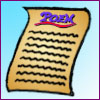
|

|
|
||||||
|
|
In these pages you will find answers to the following questions:
|
How are particular descriptions structured? |
|
|
What are the typical grammatical features of particular descriptions? |
|
|
How can I use particular descriptions in the classroom? |
We have provided you with several examples of particular descriptions. You will find these by clicking on Examples in the menu on the left.
For PrimeTeach teaching activities which provide KS2 students with practice in particular descriptions, see:
![]() Playground
games
Playground
games
![]() Animal
facts
Animal
facts
![]() My penfriend
My penfriend
![]() Three festivals
Three festivals
![]() Witches and vampires
Witches and vampires
|
||
To give us feedback about this section, click here or on the Comment button at the top of the screen.
If you have any questions about this section, visit the Language Corner.
If you have any questions or suggestions about how to teach this section, send a message to the Teaching Corner.